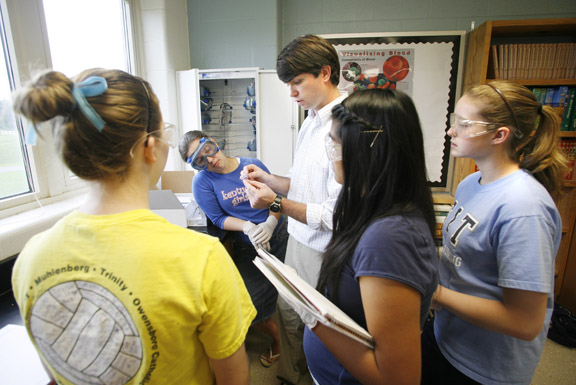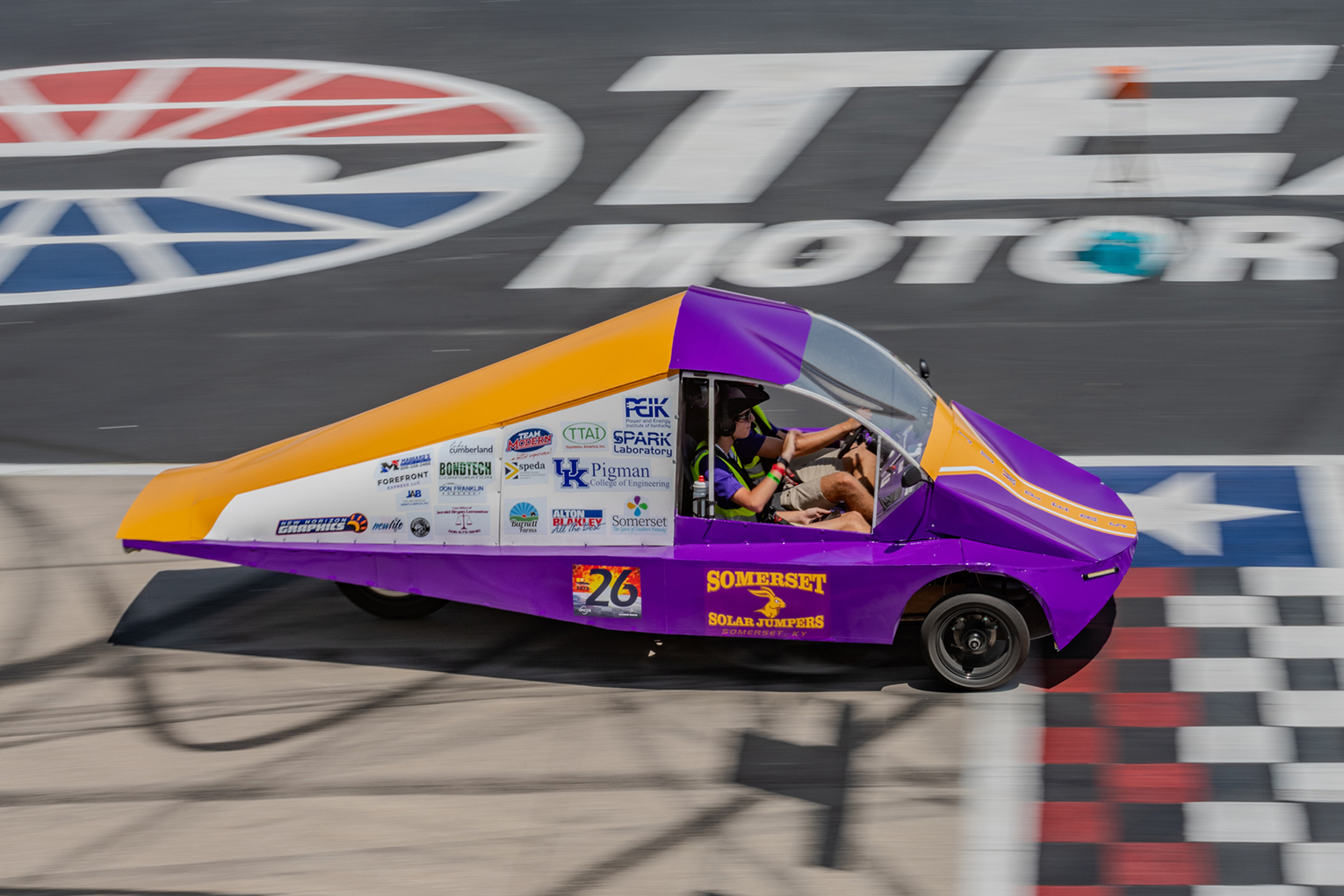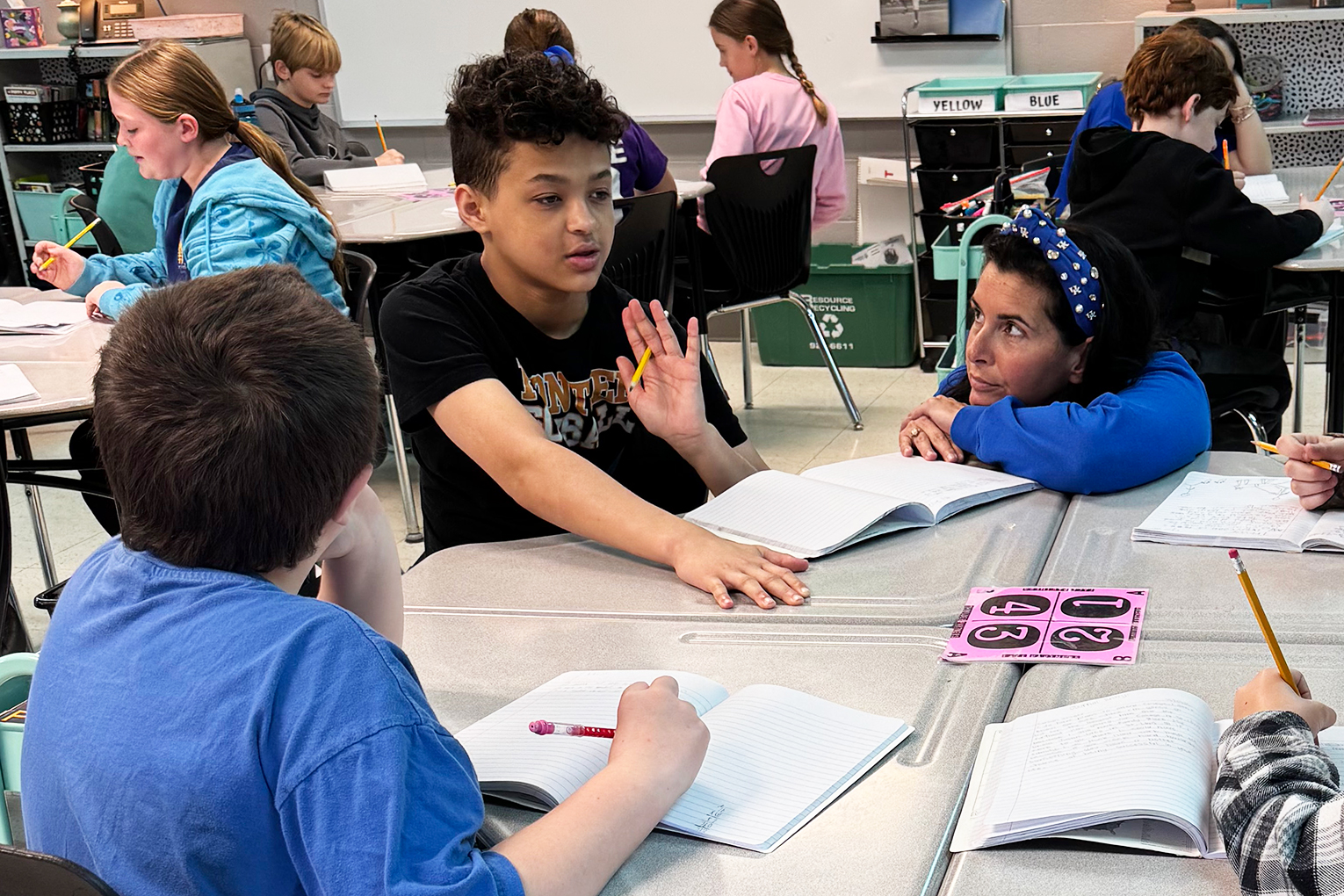
Biology teacher Jon Ezzell helps (pictured left to right) freshmen Hannah Moore, Emily Flener, Mariah Lanoire and Darah Doss with an experiment analyzing DNA during Principles of the Biomedical Sciences class at Muhlenberg County High School May 20, 2010. Muhlenberg County High is one of several Kentucky schools implementing the Project Lead the Way (PLTW) Biomedical Sciences pathway for their students. Photo by Amy Wallot
By Matthew Tungate
matther.tungate@education.ky.gov
Last year, 47 students at Muhlenberg County High School used hands-on activities to study diabetes to learn about homeostasis and metabolism, and they investigated sickle-cell disease while learning about genetics and DNA.
Biology teacher Jon Ezzell, in his fifth year at Muhlenberg County High, said last year was the first year for Project Lead the Way (PLTW)’s Biomedical Sciences program at the school. The program helps students understand biomedical sciences and prepares them for careers in the field using the same techniques PLTW has used in its courses related to science, technology, engineering and mathematics.
Ezzell thinks the program gives students real-world insight into the biomedical science industry and lays a foundation that will help them succeed in college.
“I didn’t have students ask, ‘Why do we need to learn this?’ because it was obvious to them that what they were learning was important,” Ezzell said. “The first class takes some of the best labs, projects, technology and writing assignments from biology, anatomy and physiology, chemistry, and even math and physics courses and blends them together throughout the curriculum into meaningful learning experiences for the students. That’s what really sold me on the program.”
By the second half of the course, Principles of the Biomedical Sciences, students were starting to connect what they were learning with their other classes, he said.
“Students would literally shout, ‘Hey, we just talked about that in chemistry!’ and you could see that they understood why learning chemistry was helping them understand diseases like diabetes or hypercholesterolemia,” he said.
The PLTW Biomedical Sciences pathway began in Kentucky in 2008 as a supplement to mandated science courses for high school students and for those who have an interest in pursuing a health care career, according to Karen Smith, state lead for Biomedical Sciences with the Kentucky Department of Education. The program consists of a sequence of four courses, each with progressively more difficult content.
PTLW provides a curriculum that is rigorous and uses real-world activities, projects and problems, Smith said. The curriculum includes day-by-day student work; support and enhancement activities; course vocabulary; instructional resources; and an annually revised end-of-course exam.
Hopkins County Central High School implemented Biomedical Pathways last year as a two-trimester course geared toward top-performing incoming freshmen, according to Joseph Miller, a biology and chemistry teacher in his third year.
Principles of Biomedical Sciences is a project-based learning course, and it can be very intense and motivating at the same time because the material can be related to real-life situations, he said.
“The Biomedical Sciences pathway is a good addition for students because it affords the opportunity to take a very hands-on approach to the field and perform experiments, such as DNA gel electrophoresis, that I did not see until my first years in college,” Miller said. “The course gives students a very big stepping stone in any science field because the curriculum is so integrated and saturated with many other fields of science (e.g. biology, chemistry, biotechnology).”
Smith said the Biomedical Sciences career pathway, like many in the Career and Technical Education Career Pathways, allows students to see why they are learning concepts in mathematics and science classes.
“All courses are aligned with national math, science and health science standards and, through the projects introduced throughout the courses, students relate concepts to real-world applications for said concepts,” she said.
For example, Miller said many students had trouble understanding material in the DNA and chromosome activities.
“But after actually performing the activities and having the opportunity to build models and look at 3D structures online with interactive tutorials, my students seemed to grasp the subject and those sections of the curriculum were some of the most memorable for them (and they performed well on those sections of the final exam),” he said.
Henderson County High School added the Biomedical Pathways this year with a class of 33 students in Principles of the Biomedical Sciences, according to Victor Doty, Henderson County director of Career and Technical Education.
“I think the most important thing to share is the fact that we are adding real-world activities to science into the classroom,” he said. “This helps the school increase rigor and relevance for the students.”
Districts interested in joining PLTW must register the district and school, complete the school district agreement, register the teacher for training, and purchase software, materials and supplies needed for the course, Smith said.
Teachers must attend a two-week training session prior to adding each course in the pathway, she said.
“In this core session, teachers become students performing the projects they will introduce to students in the next course,” Smith said.
Miller and Ezzell both attended training at Indiana University-Purdue University Indianapolis. Miller said the training sessions are very intensive, running from 8 a.m. to 6 p.m.
“During the course, the teacher actually takes the curriculum in a room full of other teachers who will be instructing these classes all around the country and becomes the student and performs a majority of the activities in the curriculum,” he said. “A ‘hands-on’ approach is taken, and a content- and pedagogy-intensive course is designed by master teachers who already have taught the course. The master teachers instruct those in the core training session on what worked for them in teaching the course and some areas that needed more clarification for their students and some things that we could do to prepare in advance for teaching the course.”
Ezzell said the Biomedical Sciences program uses a lot of technology and laboratory activities, so much of the training focuses on how to use the technology and how to prepare for and complete the labs in the course.
“I would just encourage more schools to consider the program,” he said. “Administrators, board members, parents and teachers should go and see the program in action at other schools. That’s what got the ball rolling in our district.”
MORE INFO …
www.pltw.org
Karen Smith, karen.smith@education.ky.gov, (502) 564-3472




Leave A Comment